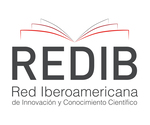Association between altered proton magnetic resonance spectroscopy (1H MRS) findings and clinical symptoms of schizophrenia.
Resumen
Objective: To assess the metabolic alterations of the thalamus in subjects with schizophrenia compared to healthysubjects and to investigate whether specific schizophrenic symptoms are associated with metabolic alterations
measured by 1H MRS. Methods: This is a case-control study including patients with schizophrenia diagnosed using
the Diagnostic and Statistical Manual of Mental Disorders - Fourth Edition, DMS-IV and the Operational Criteria
Checklist for Psychotic Illness (OPCRIT). Proton magnetic resonance spectroscopy (1H MRS) was used to assess
metabolite concentrations (N-acetylaspartate, choline, creatinine, myoionositol and lactacte) in the left and right
thalamus of 13 patients with schizophrenia and 13 healthy controls. Results: In this study, concentrations of
specific metabolites in the thalamus, determined by 1H MRS, were similar for individuals with schizophrenia and
controls. It was observed that cases with family history of schizophrenia and disorganized speech demonstrated a
reduction in the ratio of the metabolites NAA /Cho in the thalamic nuclei on the right side. However, those with
organized delusions, hallucinations and non-affective auditory hallucinations had an increase of metabolites on the
right side compared to the left thalamus. Decreased thalamic metabolic activity in patients with positive symptoms
was observed in contrast with those who had well-organized delusions and auditory non-affective hallucinations,
core symptoms of schizophrenia. Conclusion: A lateralized thalamic involvement was verified, suggesting that
organic and genetic factors compromise the right thalamus and that the disorganization associated with delusions
and hallucinations compromises the left thalamic nuclei. Further studies to investigate the correlation between
symptoms and thalamic dysfunction are warranted. (Rev Neuropsiquiatr 2011;74:183-190)
La RNP se distribuye bajo una Licencia Creative Commons Atribución 4.0 Internacional.
Los autores ceden sus derechos a la RNP para que esta divulgue el artículo a través de los medios que disponga. La revista proporcionará formatos de declaración jurada de autoría y autorización para la publicación del artículo, los cuales deben ser entregados junto al manuscrito.
Los autores mantienen el derecho a compartir, copiar, distribuir, ejecutar y comunicar públicamente su artículo, o parte de él, mencionando la publicación original en la revista. Los autores pueden archivar en el repositorio de su institución:
- La tesis de grado de la cual derive el artículo publicado.
- La versión pre-print: versión previa a la revisión por pares.
- La versión post-print: versión final posterior a la revisión por pares.
- La versión definitiva o versión final creada por el editor para su publicación.












